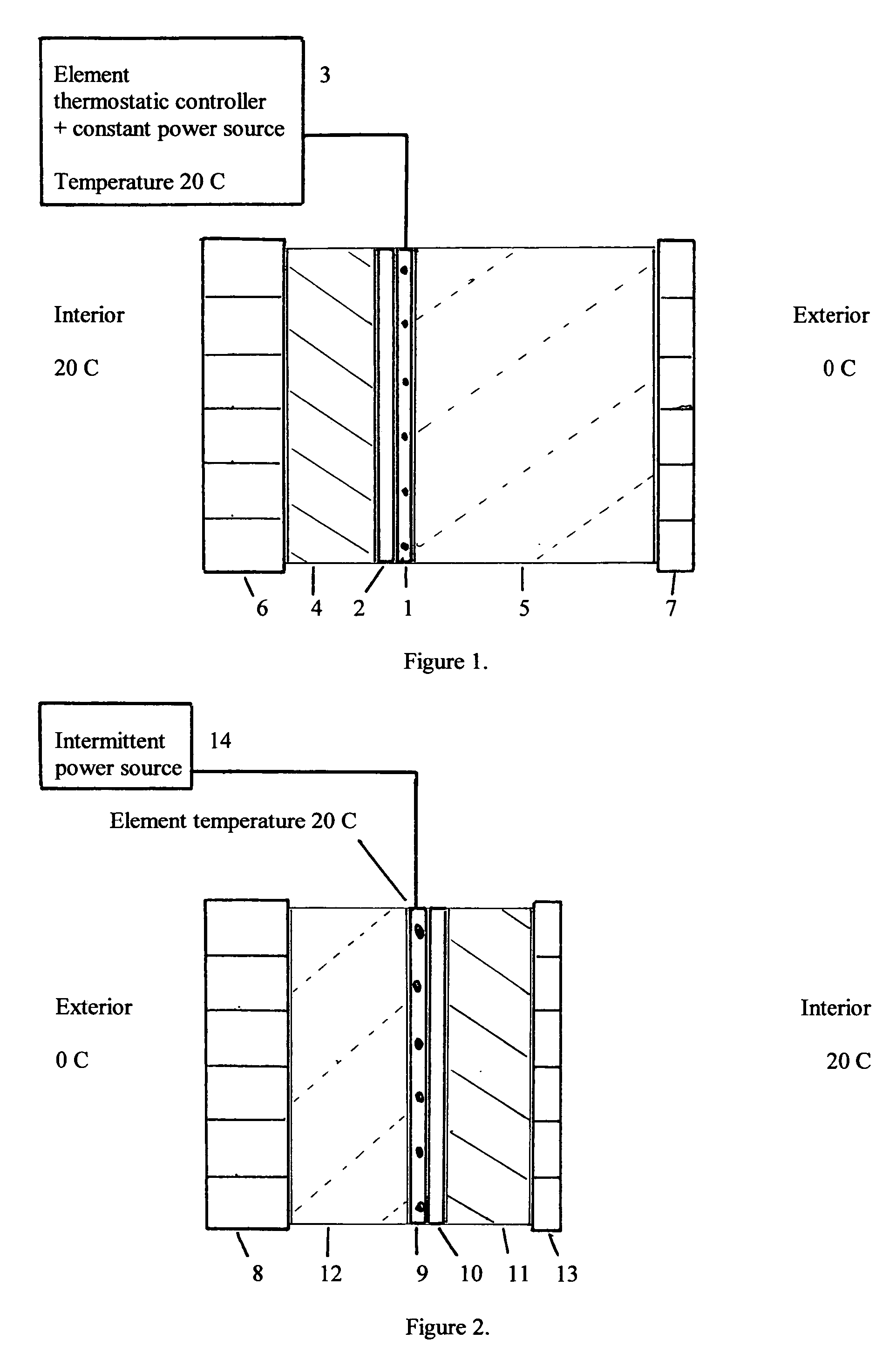Building incorporating a thermal insulation assembly and method of conserving energy
a technology of thermal insulation and building, applied in the field of building incorporating a thermal insulation assembly and a method of conserving energy, can solve the problems of wind and solar energy, low energy concentration and variable availability, and the tendency of water absorption to have a detrimental effect on the thermal insulation value of the material, so as to prevent a reduction of thermal efficiency and a deterioration of the material
- Summary
- Abstract
- Description
- Claims
- Application Information
AI Technical Summary
Benefits of technology
Problems solved by technology
Method used
Image
Examples
Embodiment Construction
[0031]FIG. 1 illustrates a thermal insulation assembly comprising an electrical heating element 1 positioned longitudinally within thermal insulation and in thermal contact with a thermal conductor 2 providing an even distribution of heat in the directional plane of the element 1. An aluminium sheet is used as the thermal conductor 2. An electrical connection is provided from the element 1 to a thermostatic controller 3 switching to a constant electrical power source. An inner layer 4 and an outer layer 5 of thermal insulation thermally insulate the element 1. The insulating effectiveness of the inner layer 4 provides sufficient thermal isolation for the element 1 to be thermostatically controllable. The outer layer 5 is of high efficiency thermal insulation typically providing a U value in the range 0.400 to 0.005 Watts per square metre per degree Kelvin. The element 1 may be of any suitable kind, converting electrical energy into thermal energy and generally having an output of no...
PUM
 Login to View More
Login to View More Abstract
Description
Claims
Application Information
 Login to View More
Login to View More - R&D
- Intellectual Property
- Life Sciences
- Materials
- Tech Scout
- Unparalleled Data Quality
- Higher Quality Content
- 60% Fewer Hallucinations
Browse by: Latest US Patents, China's latest patents, Technical Efficacy Thesaurus, Application Domain, Technology Topic, Popular Technical Reports.
© 2025 PatSnap. All rights reserved.Legal|Privacy policy|Modern Slavery Act Transparency Statement|Sitemap|About US| Contact US: help@patsnap.com



